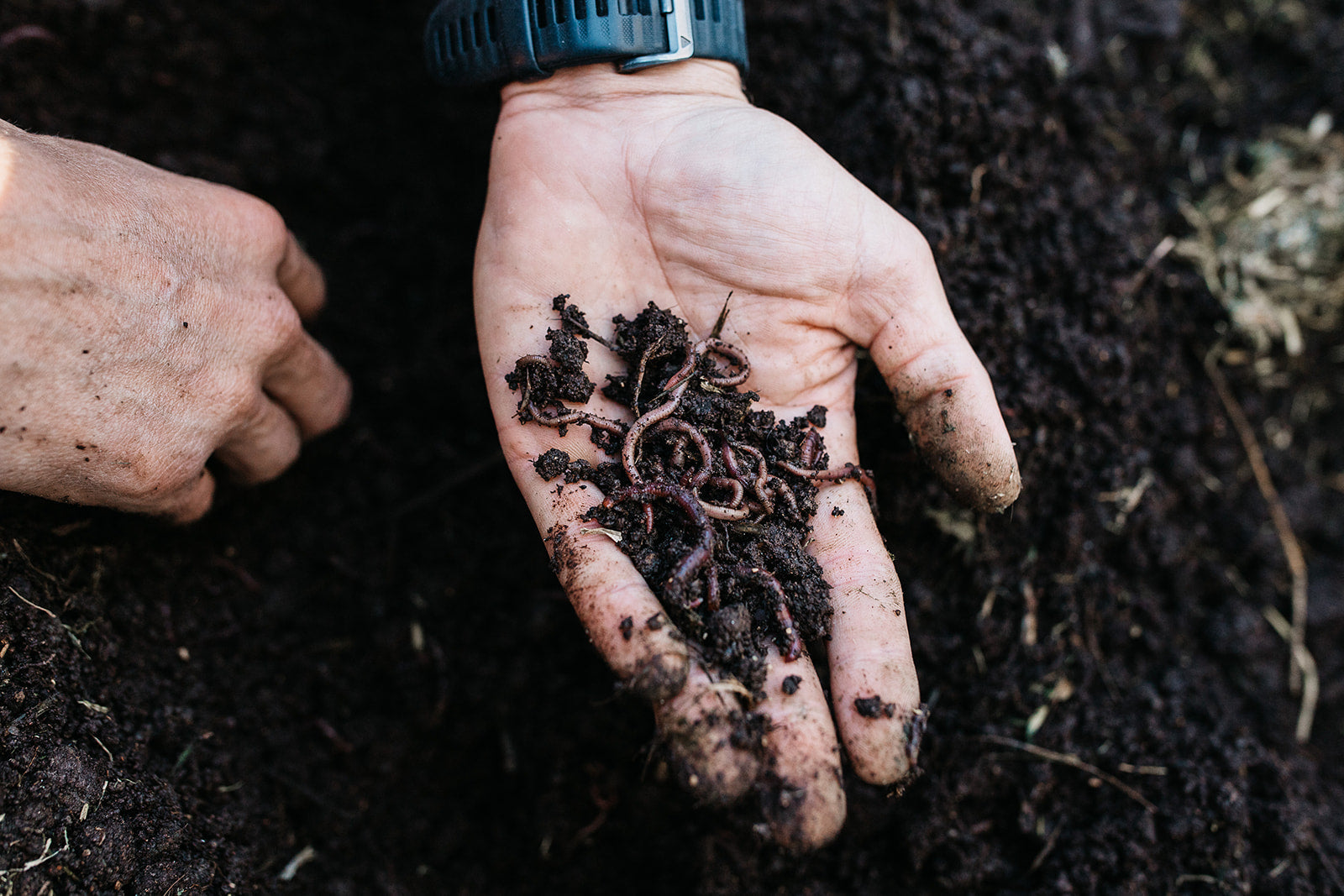Worms Can’t Regulate Their Body Temperature
Worms are cold-blooded creatures (ectotherms), meaning they cannot internally control their body temperature. Their body heat depends entirely on the surrounding environment, which is why managing temperatures of your worm farm is important. When temperatures rise higher or drop lower than their comfort zone their activity will diminish, they become sluggish, eat less, reproduce less, and in extreme cases they may not survive.
Optimal Temperatures for Compost Worms
Compost worms generally live comfortably and breed at (bedding) temperatures between 16-27°C (Edwards & Arancon, 2004). Managing temperature extremes can be challenging but here are some tips to help ensure your worms survive and thrive through the different seasons:

Managing Hot Temperatures in Your Worm Farm
When summer heat or a heatwave strikes, you’ll need to take steps to prevent your worm farm from overheating. Worms begin to experience heat stress in the high 25 °C+, and the risk of die-off rises sharply as temperatures approach the 32 °C+ range (Manikanta et al., 2023). Below are some tips for keeping your worms cool during hot weather:
- Add thinner layers of feed to minimise the heat generated by decomposing food.
- Limit feed to certain sections of the bin so that there are cooler areas where the worms can go to escape decomposing, heat-conveying food (strip feeding).
- Your instinct may be to cool down the bin by adding water, but that can actually cause the bin to heat up because water will fill in the air pockets in the bedding.
- Instead of spraying water to soak the bedding, give it a fine mist.
- In extreme heat, adding a frozen water bottle or freezing your scraps before adding them to your worm farm can assist in dropping temperature levels.
- Always ensure your worm farm is located in a fully shaded area.
- Improve ventilation by slightly propping open the bin lid or using breathable coverings like mesh. Increased airflow helps release trapped heat while keeping pests out.
Managing Cold Temperatures in Your Worm Farm
Worms can handle cooler weather better than heat, but you still need to protect them when temperatures drop too low. In cold seasons, the goal is to keep the worms’ environment from getting below the critical 10 °C zone where they become inactive or risk dying (Little, 2021). Here are some strategies to help your compost worms survive and thrive through chilly conditions:
- Increase your nitrogen (greens) inputs as decomposing food generates heat.
- Relocate the worm farm to an area small amounts of sunlight
- Insulate the bedding in some way to assist with keeping in heat - thick layers of hay/straw or a worm blanket (e.g. old cotton towel)
The large thermal mass design of our worm farms assist in managing temperature changes as it allows space for worms to burrow to, allowing them areas to escape extreme heat or cold.
In summary, because worms are cold-blooded, they depend on us to keep their environment in a liveable temperature range. By monitoring the weather and using the hot weather tips (cooling feed, shading, minimal wetting) and cold weather tips (insulation, strategic feeding, relocation) outlined above, you can ensure your worms stay comfortable, continue eating and composting efficiently, and survive through extreme conditions. Happy worm farming!
References
Edwards, C. A., Arancon, N. Q., & Sherman, R. L. (Eds.). (2010). Vermiculture technology: Earthworms, organic wastes, and environmental management (1st ed.). CRC Press. https://doi.org/10.1201/b10453
Little, A. (2021, November 8). Keep worms warm for winter vermicomposting. University of Illinois Extension. https://extension.illinois.edu/news-releases/keep-worms-warm-winter-vermicomposting
Manikanta, L., Sai Sudheer, S. V., Dhasmana, A., & Sudheer, B. (2023). The science of vermiculture: Use of earthworms in organic waste management. The Pharma Innovation Journal, 12(1), 137–140. https://doi.org/10.22271/tpi.2023.v12.i1b.18357


